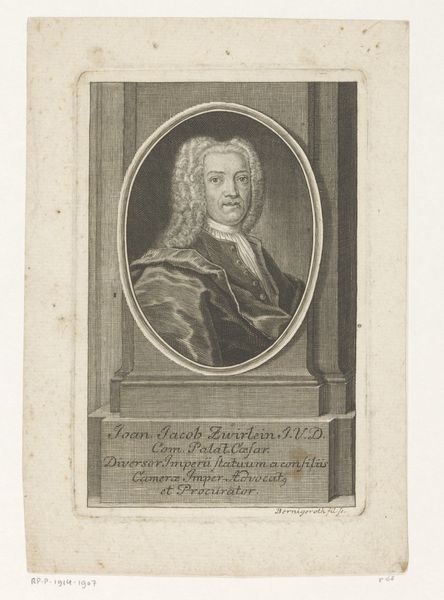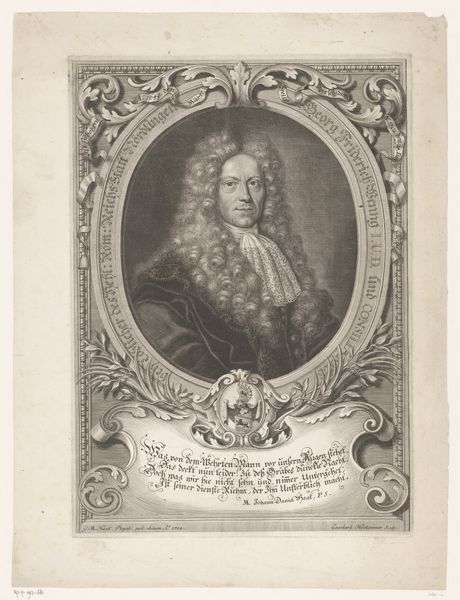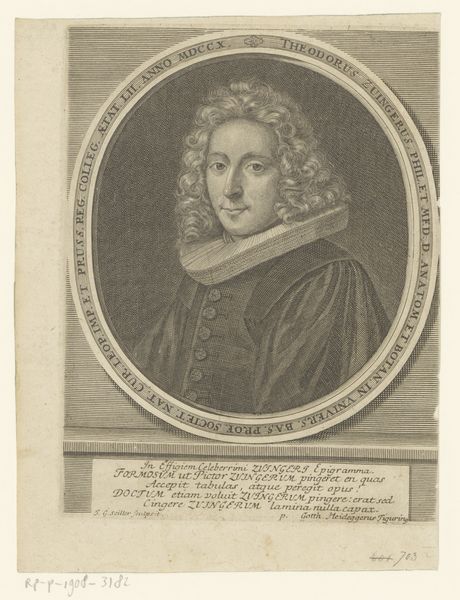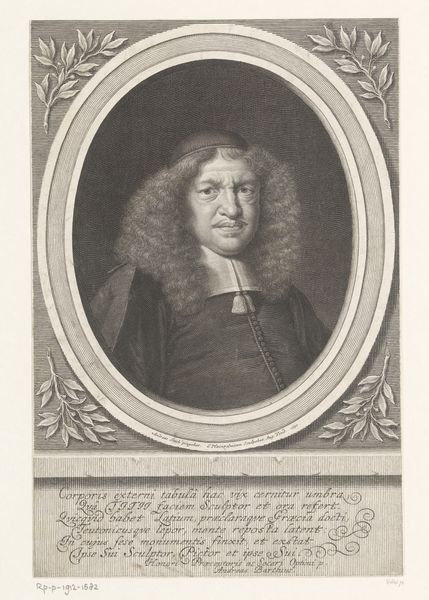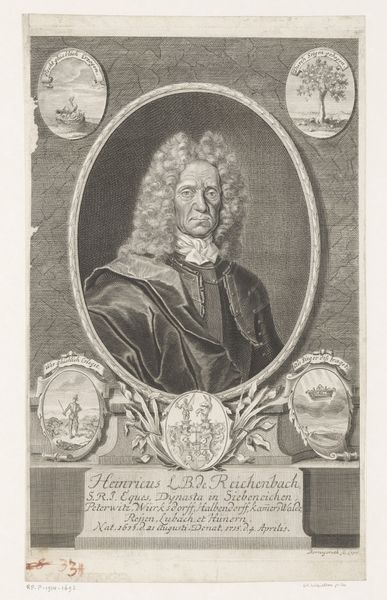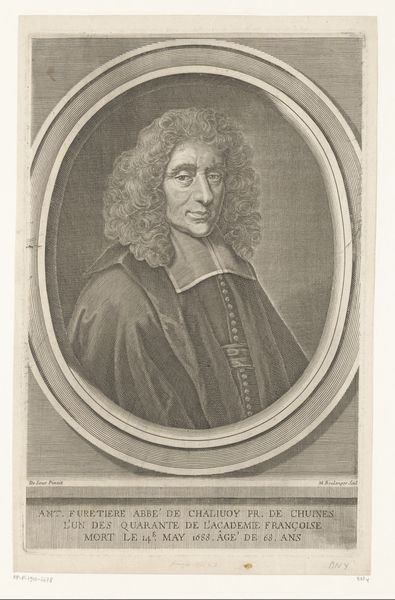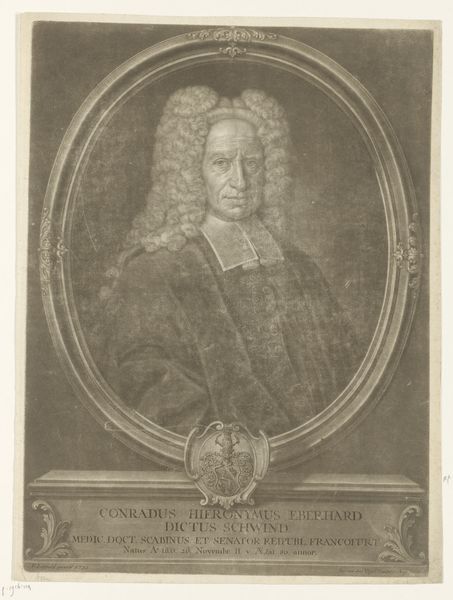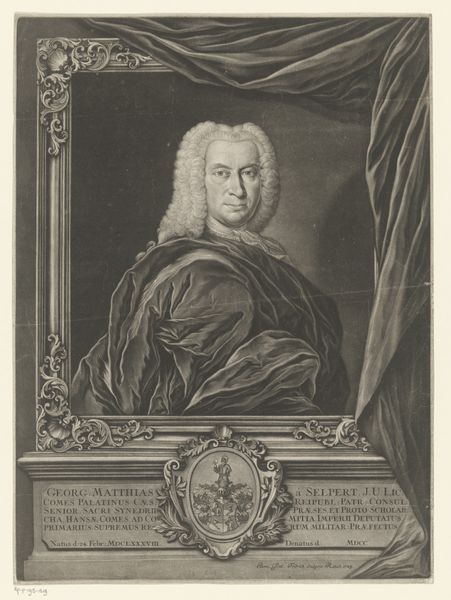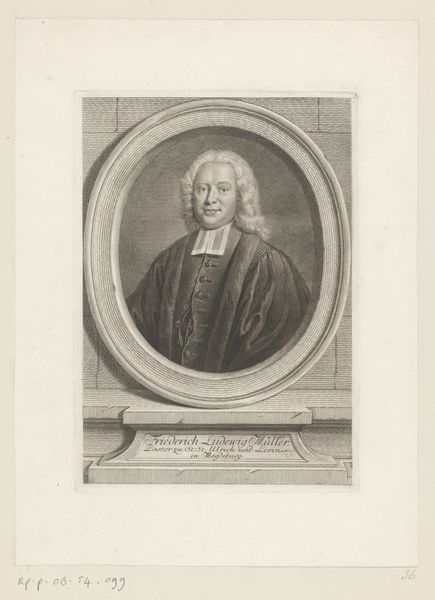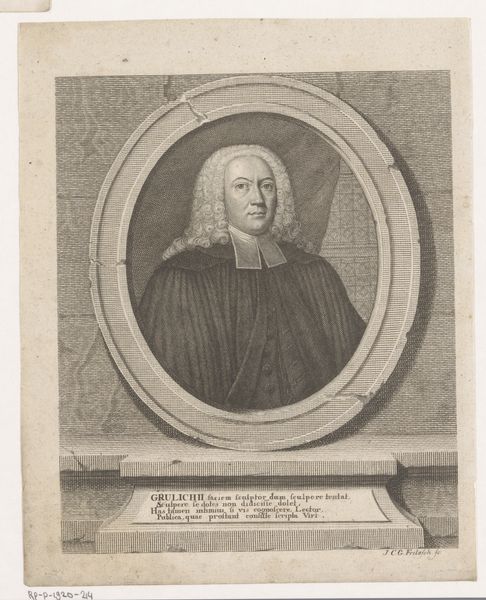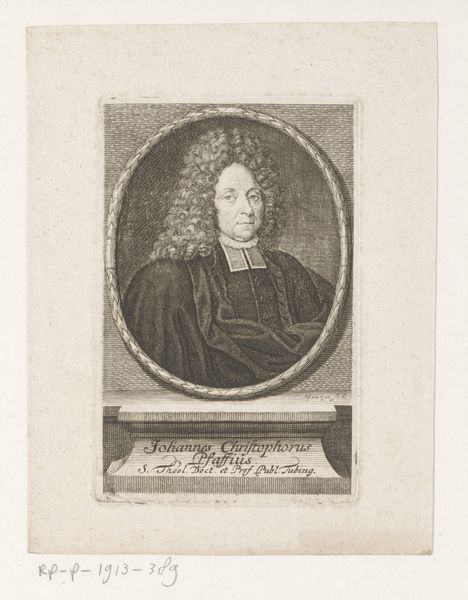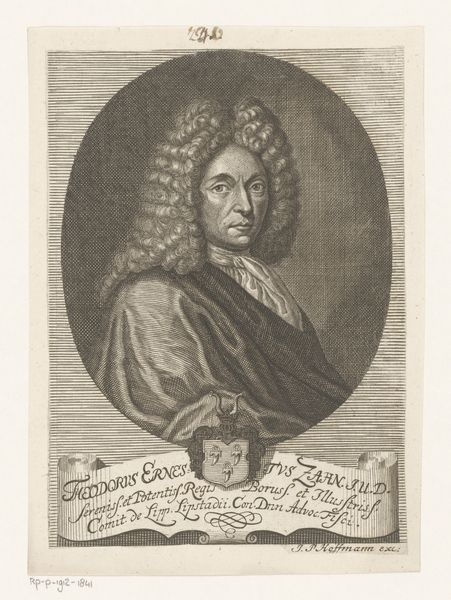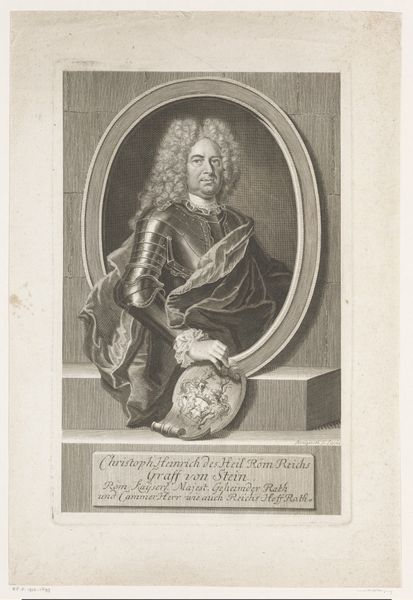
print, paper, engraving
#
portrait
#
aged paper
#
toned paper
#
baroque
# print
#
old engraving style
#
charcoal drawing
#
paper
#
19th century
#
academic-art
#
engraving
Dimensions: height 203 mm, width 161 mm
Copyright: Rijks Museum: Open Domain
Curator: This engraving, housed here at the Rijksmuseum, depicts Johann Georg Walch. The print, executed sometime between 1720 and 1775, presents us with a fine example of portraiture from the period. Editor: The overwhelming first impression is definitely one of formality and maybe a hint of austere academia, framed in that elaborately detailed oval border! It feels like stepping back into an age obsessed with appearances and decorum. Curator: Indeed. As a professor and theologian, Walch held a prominent position in his community, and portraiture served as a crucial tool for disseminating his image and solidifying his authority. This would have been reproduced and circulated. Editor: The visual language certainly reinforces that sense of authority. The meticulous detail given to his wig – practically a halo of status – alongside the carefully inscribed title, they both scream importance. Do you think that frame is intended to evoke a mirror? Is there an invitation here? Curator: That is fascinating. One could argue the mirror motif amplifies the print's intended purpose, to reflect not only Walch’s likeness but also his societal role and influence back onto the viewer, reinforcing the existing power structures. Editor: Looking closely, the choice of engraving also interests me. Those delicate lines give it an ethereal feel, almost like a ghostly visitation from the past, especially considering the slight yellowing and degradation of the paper. There's a weight of history, a tangible connection to the era. Curator: The degradation you mentioned speaks volumes. It emphasizes the print's journey through time, reminding us of its role in transmitting ideas and values across generations, and, of course, of the decline of those ideas over time as well. Editor: It makes you consider who Walch *really* was, behind all these symbols of academic prestige and the somewhat intimidating expression. What lasting impression did he wish to make? Curator: And for whom was that impression intended? It underscores the critical question of access. Who within the public sphere could afford this print and how did that shape perceptions of Walch himself? Editor: So, we are really examining here a powerful visual representation shaped not only by artistic skill but also by the specific social dynamics of the era, with status intricately woven in the symbolism. Curator: Precisely. Seeing through the conventions brings a historical figure into sharp focus.
Comments
No comments
Be the first to comment and join the conversation on the ultimate creative platform.
